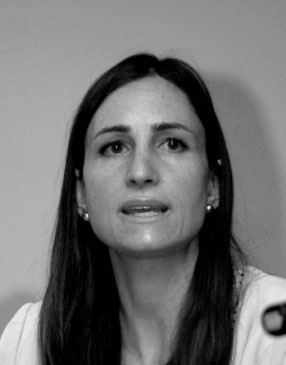While the APNU+AFC’s Green State Development Strategy (GSDS) is an ambitious and laudable plan, its 2025 target to get close to 100% renewable energy is unrealistic, according to specialist in Latin American energy issues Lisa Viscidi.
“When you have a country that doesn’t have any renewables, I think it is good to have a target and promote renewables but in what—six years?—I don’t believe that that is even technically possible,” Viscidi, who is also Energy Program Director at the not-for-profit organisation ‘The Dialogue,’ told Stabroek News in an interview last Tuesday.
Working towards 100% renewable energy by 2025 was among several commitments made by President David Granger in 2016, when he joined other world leaders in inking the historic Paris Agreement in New York.
The Paris Agreement sets out a global action plan to put the world on track to avoid dangerous climate change by limiting global warming to well below 2°C above pre-industrial levels.
Granger had said that Guyana intends to implement initiatives in the forestry and renewable energy sectors, including through the Reducing Emissions from Deforestation and Forest Degradation (REDD) Plus programme. “We will move closer towards a 100% renewable power supply by 2025, conditional on appropriate support and adequate resources,” he said.
According to Granger, Guyana’s proposed commitments, through avoided emissions, can contribute the equivalent of up to 48.7 million metric tonnes of carbon dioxide to the global mitigation effort.
It is to this end that government’s much-touted GSDS framework was crafted.
The Ministry of the Presidency has said the GSDS will be “a living example of Guyana’s commitment to the planet” and will also ensure the sustainable growth and economic well-being of the country’s population, while guiding Guyana’s national development policies for the next 20 years.
The eleventh and final advisory committee meeting of the GSDS was held late last month, after months of consultations.
Following the consultations, the Ministry of the Presidency said the Department of Environment is currently working on the third component of the GSDS—the Monitoring and Evaluation Framework—and that the policy document is scheduled to be launched this September.
“The Green State Strategy is extremely ambitious. It is definitely possible but the only way is to have a lot of hydroelectric dam capacity and that isn’t there,” Viscidi, however, told Stabroek News.
“The way the country develops that would be that they have to have to go through a whole process…you know, go out to project developers, seek investors, then you have to give time to prepare bids….have that whole process and that is going to take time because [you] can’t start building the next day. You have to also extend the electricity grid…it is a whole process,” she added.
The government has embarked on a series of small solar projects which critics have said will not be transformative. More of these are to be funded with US$80m under a forest protection agreement with Norway. Opposition Leader Bharrat Jagdeo has questioned the potential outcomes of the GSDS, while saying it would be discontinued if his party is elected into office at the next elections.
“This is an environmental strategy superimposed on the country that we, the taxpayers, will have to pay for… How many jobs have they created besides planting some palms on the East Coast?” Jagdeo recently asked as he compared the GSDS to his party’s Low Carbon Development Strategy (LCDS).
He asked that persons compare it with the LCDS and judge for themselves which was better for this country. He too had said that he did not believe the 2025 vision for renewables to be realistic.
“The GSDS would have to be funded from taxpayers and oil money but we identified ways of using the LCDS to make money; it was a generator of funds. They promised 100% renewable by 2025 but have not yet identified a single new project to make this reality. Lofty ideas but when it comes down to specifics for delivery, it is absent. [It is] zero!” he stressed.






